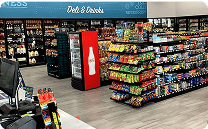In This article
Time and attendance systems are essential tools for workforce management. They help organizations monitor when employees start and end their shifts, how many hours they work, and whether they are following scheduled breaks and shift assignments. These systems support both operational efficiency and legal compliance by providing a reliable record of employee timekeeping.
Traditionally, tracking attendance was a manual process involving handwritten timesheets or punch cards. Today’s time and attendance systems are typically digital and can integrate with payroll software, scheduling platforms, access control systems, and even surveillance footage. This integration helps reduce administrative errors, limit time theft, and improve transparency across all departments.
Businesses rely on time and attendance systems to:
- Record clock-in and clock-out times for hourly, part-time, or salaried employees.
- Track breaks, lunches, and overtime hours.
- Log absences, sick days, vacation time, and other leave requests.
- Monitor compliance with labor laws, including mandated breaks and maximum shift limits.
- Create audit trails for labor-related disputes or investigations.
These systems can take many forms. Some businesses use biometric devices—such as fingerprint or facial recognition terminals—while others rely on RFID badges, PIN-based login systems, or mobile check-in applications. Many platforms also offer geofencing or location-based verification to track attendance for remote or off-site employees.
Benefits of Time and Attendance Systems
A time and attendance system can support better staffing decisions by identifying trends in lateness, early departures, or unplanned absences. For example, a pattern of absenteeism on specific shifts may highlight scheduling challenges or the need for additional training and engagement. At the same time, strong attendance records can help recognize reliable team members and guide performance evaluations.
Key benefits of time and attendance systems include:
- Accurate payroll processing, based on verified work hours.
- Improved compliance with regional and national labor laws.
- Increased productivity by reducing manual entry and administrative follow-up.
- Reduced time theft, such as buddy punching or unauthorized overtime.
- Enhanced visibility into staffing coverage, allowing for better resource planning.
When integrated with access control tools and video surveillance, time and attendance systems offer even greater verification capabilities. A clock-in event can be automatically tied to a door entry or captured on video for additional validation, reducing the risk of inaccurate records or intentional manipulation.
Multi-location businesses benefit especially from centralized time tracking, as it allows leadership to compare attendance metrics across sites, monitor company-wide staffing trends, and address potential compliance issues before they escalate.
To maximize effectiveness, time and attendance systems should be user-friendly for both employees and administrators. Easy-to-navigate dashboards, automated alerts, and detailed reporting tools help managers stay informed and act quickly when schedule adjustments or policy interventions are needed.
Simplify Workforce Tracking with DTiQ
DTiQ’s 360iQ platform improves time and attendance accuracy by connecting employee activity to video surveillance, access control data, and operational logs. Whether verifying clock-in behavior, investigating absentee patterns, or supporting compliant payroll practices, DATAiQ delivers a clear, centralized view of employee time tracking—so your business stays focused, efficient, and accountable. Contact us for more information.





























